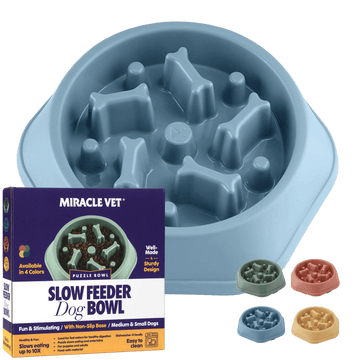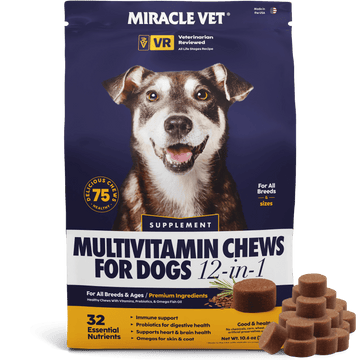Fussy dogs are more common than you would think, but is your dog being a fussy eater or is their loss of appetite an early indication of a medical problem?
There are several reasons why your dog may not be eating his dog food such as:
- Change in Diet: Dogs can be picky eaters and may refuse to eat a new type of food, especially if it is different from what they are used to. Changing your dog's diet suddenly, without a gradual transition, can also lead to gastrointestinal upset and a refusal to eat.
- Food Preferences: Just like humans, dogs have their own preferences when it comes to food. Your dog may simply not like the taste or texture of the food you are offering.
- Feeding Schedule: Dogs thrive on routine and if their feeding schedule is disrupted, it can lead to a loss of appetite. Make sure you are feeding your dog at the same time every day and try to stick to a consistent routine.
All dogs are different and just because one dog likes a certain food doesn’t mean they all will.
Changing your dog’s diet may also cause them to turn their nose up at their new food. You can mix old and new food to help them adjust to their new diet, especially if you are changing their food to a better quality food or a diet that will help their long term health.
Whilst it is frustrating that your best friend is turning their nose up at delicious food this is not usually a cause for immediate concern, however you should also consider that their reluctance to eat may be more serious than just a fussy pup or out of routine..
Reasons your Dog may not be eating could also be:
- Health Issues: One of the most common reasons for a loss of appetite in dogs is an underlying health issue. It could be anything from an upset stomach or toothache to a more serious condition such as kidney disease, liver problems, or cancer. If you notice a sudden change in your dog's eating habits, it is important to take him to the vet for a check-up.
- Stress: Stress and anxiety can also cause a dog to lose his appetite. This could be due to changes in the environment, such as moving to a new home, or a change in routine, such as the owner going back to work after an extended period at home.
If your dog is not eating his food, it is important to rule out any underlying health issues by taking him to the vet for a check-up. Once any medical conditions have been ruled out, you can work with your vet to determine the best course of action to encourage your dog to eat, such as trying a different type of food or adjusting the feeding schedule.
How to get my Dog To Eat Their Dog Food
There are several things you can try to encourage your dog to eat his dog food:
- Establish a feeding routine: Feed your dog at the same time every day and remove the food bowl after 20-30 minutes. This can help establish a routine and prevent grazing behavior.
- Mix in wet food: Try mixing in some wet dog food with your dog's dry food to make it more appealing. This can also add some moisture to your dog's diet, which can be helpful if they are prone to dehydration. If your dog is losing weight then our Liquid Weight Gainer is great to add to dry food giving a tasty treat and extra calories.
- Change the food: If your dog is consistently refusing to eat his dog food, it may be time to switch to a different brand or type of dog food. Some dogs have food allergies or preferences, so finding the right food for your dog may take some trial and error.
- Add some flavor: Try adding a small amount of low-sodium chicken or beef broth to your dog's food to give it some added flavor.
- Avoid table scraps: Feeding your dog table scraps can make them less interested in their dog food. Stick to feeding your dog his own food and use treats for training and occasional rewards.
If your dog continues to refuse to eat his dog food or shows other signs of illness, such as vomiting or diarrhea, it is important to take them to a veterinarian for a checkup.
If your dog has not been eating and you are worried about weight loss then check out our tips on determining your dogs healthy weight and sign up to our newsletter for more tips.










